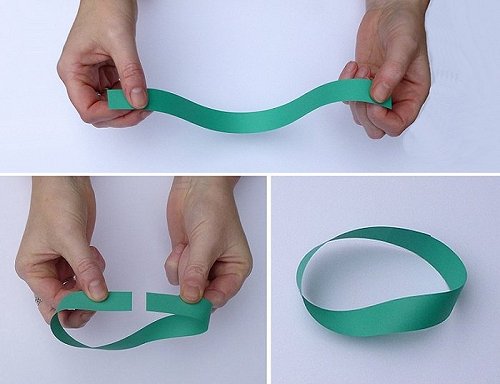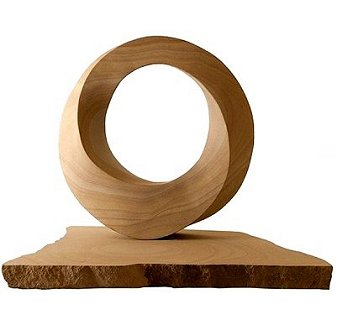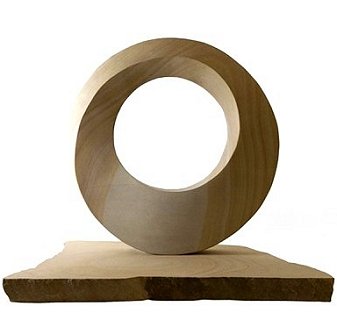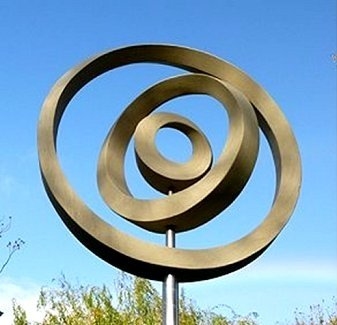|
Mobius Strips and Solids |
||
|
|
||

|
||
|
|
||
|
Click on the video for a demonstration:
|
||
|
The cross-section of the torus of a Möbius strip is a line - one dimensional. The strip is essentially a warped plane occupying three dimensions - and not a solid. The paradox of the Möbius strip is that here we have a plane in space which has only one edge and one face.
|
||
|
Möbius solids |
||
|
When you attempt the same thing with a two dimensional quadrilateral torus cross-section, what in effect happens is that the edge of the one dimensional strip becomes in effect another face, and so the resulting solid ends up having two faces - and two edges as well. |
||

|
||
|
This happens with my Möbius I, whose torus cross-section twists by 180° with every revolution - the same as for a Möbius strip. Click on the video to watch a demonstration of this: |
||

Möbius I |
||
|
Möbius III is different because I have twisted the cross-section more slowly, so that in terms of the Möbius strip analogy, a face becomes an edge after one revolution, and so the resulting sculpture has only one face. This is achieved by twisting the torus cross-section through only 90° in one revolution, rather than the 180° twist of the Möbius strip. It is a simple enough difference to make, but one which results in a topologically quite different solid - a solid with just one face and one edge. Click on the video for a demonstration of tracing the one face through four revolutions to arrive back at its starting point: |
||

Möbius III |
||
|
This takes the Möbius strip paradox into three dimensions – now we also have a solid with only one face and one edge. |
||
| ~~~~~~~~~~~~~~~~~~~~~~~~~~~~~~~~~~~~~~~ | ||
|
The same effect can be achieved with a torus with a triangular cross-section, as in the middle section of Möbius V below: Since dihedral angles less than 60° become increasingly unstable and brittle in this kind of stone, I have maintained an equilateral cross-section throughout – but a sculpture with varying dihedral angles would be possible when made out of other materials. This solid also has only one face and one edge. This has been achieved by twisting the torus by 120° in every revolution. Three revolutions bring the face or the edge back to their starting points. Click on the demonstration video below: |
||

|
||
| Möbius V | ||
|
Such solids would also be possible using pentagonal, or any n-side polygonal, cross-sectioned torus, but I haven’t made any yet. |
||
|
Jim Milner, 2015
|
||